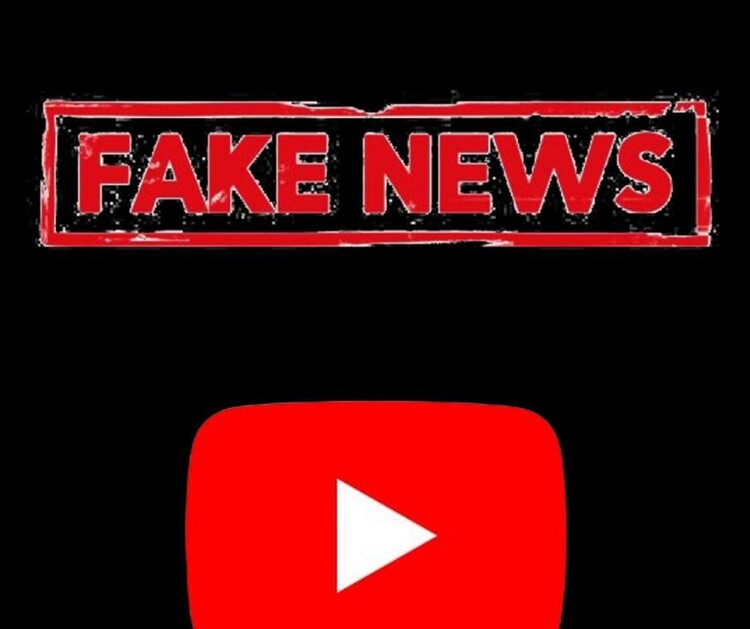In the era of digital media and online content consumption, YouTube has emerged as a powerful platform for sharing and accessing videos on a wide range of topics. However, with the growing popularity of YouTube, there has also been an alarming rise in the number of fake channels that aim to mislead users and spread misinformation. Recognizing this pressing issue, the Ministry has taken a decisive step by implementing a ban on fake YouTube channels that deceive and misguide users. In this article, we will explore the implications of this ban and discuss the importance of combating misinformation in the digital space.
The Rise of Fake YouTube Channels:
-
Misinformation Epidemic:
- Highlighting the prevalence of misinformation on YouTube.
- Discussing the impact of fake channels on user perception and understanding.
- Examining the potential dangers of spreading false information.
-
Deceptive Tactics:
- Unveiling the strategies employed by fake YouTube channels.
- Analyzing clickbait titles, misleading thumbnails, and sensationalized content.
- Shedding light on the manipulative techniques used to attract viewers.
The Ministry Takes a Stand:
-
Implementing the Ban:
- Discussing the Ministry’s decision to ban fake YouTube channels.
- Explaining the rationale behind the ban and its significance.
- Emphasizing the need for responsible content creation and consumption.
-
Enhancing User Protection:
- Detailing the measures taken to protect users from fake channels.
- Highlighting the importance of reporting suspicious or misleading content.
- Encouraging users to be vigilant and discerning when engaging with YouTube content.
Combating Misinformation:
-
Promoting Digital Literacy:
- Advocating for the importance of media literacy and critical thinking skills.
- Encouraging users to verify information from reliable sources.
- Suggesting ways to identify and avoid fake YouTube channels.
-
Collaboration with YouTube:
- Addressing the role of YouTube in tackling fake channels.
- Highlighting YouTube’s policies and initiatives to combat misinformation.
- Advocating for greater collaboration between the Ministry and YouTube to ensure user safety.
The Path Ahead:
-
Continuous Monitoring:
- Discussing the need for ongoing monitoring and enforcement of the ban.
- Outlining potential challenges in identifying and addressing fake channels.
- Calling for active involvement from users and the YouTube community.
-
Education and Awareness:
- Promoting educational campaigns to raise awareness about fake channels.
- Advocating for the inclusion of digital literacy programs in educational curricula.
- Empowering users to be responsible consumers of online content.
Conclusion:
The ban on fake YouTube channels imposed by the Ministry marks a crucial step towards safeguarding users from misinformation and deceptive content. The rise of fake channels has had a detrimental impact on user perception and understanding, making it imperative to address this issue and promote responsible content creation and consumption.
Misinformation has become an epidemic in the digital age, and YouTube has been significantly affected by the proliferation of fake channels. The ban serves as a means to protect users from false information, clickbait titles, misleading thumbnails, and sensationalized content that aim to manipulate and deceive.
By implementing the ban, the Ministry demonstrates its commitment to user protection and ensuring the integrity of YouTube as a platform. It sends a strong message that deceptive tactics will not be tolerated and emphasizes the need for responsible digital practices.
However, the battle against misinformation requires continuous monitoring and enforcement. It is essential to stay vigilant and proactive in identifying and addressing fake channels that may emerge in the future. The collaboration between the Ministry and YouTube plays a crucial role in this endeavor, with YouTube’s policies and initiatives being instrumental in combating misinformation.
To effectively combat misinformation, promoting digital literacy and critical thinking skills is paramount. Users should be empowered to verify information from reliable sources and distinguish between authentic content and deceptive practices. Educational campaigns and the inclusion of digital literacy programs in educational curricula can contribute to creating a more informed and discerning user base.
The conclusion of the ban on fake YouTube channels is not the end but rather the beginning of a collective effort to create a safer online environment. Users must actively participate by reporting suspicious content and contributing to the identification and removal of fake channels.
By fostering transparency, accountability, and responsible digital citizenship, YouTube can reclaim its position as a trustworthy platform for reliable information and authentic content. Through continuous collaboration between the Ministry, YouTube, and the user community, we can mitigate the negative impact of fake channels and promote a healthier digital ecosystem.
The ban on fake YouTube channels serves as a critical step towards combating misinformation and protecting users. The battle against fake channels requires ongoing efforts in monitoring, education, and awareness. By working together, we can foster a culture of trust and ensure that YouTube remains a valuable resource for accurate information and meaningful content. Let us strive for a digital landscape that empowers users, promotes transparency, and upholds the integrity of online communication.



